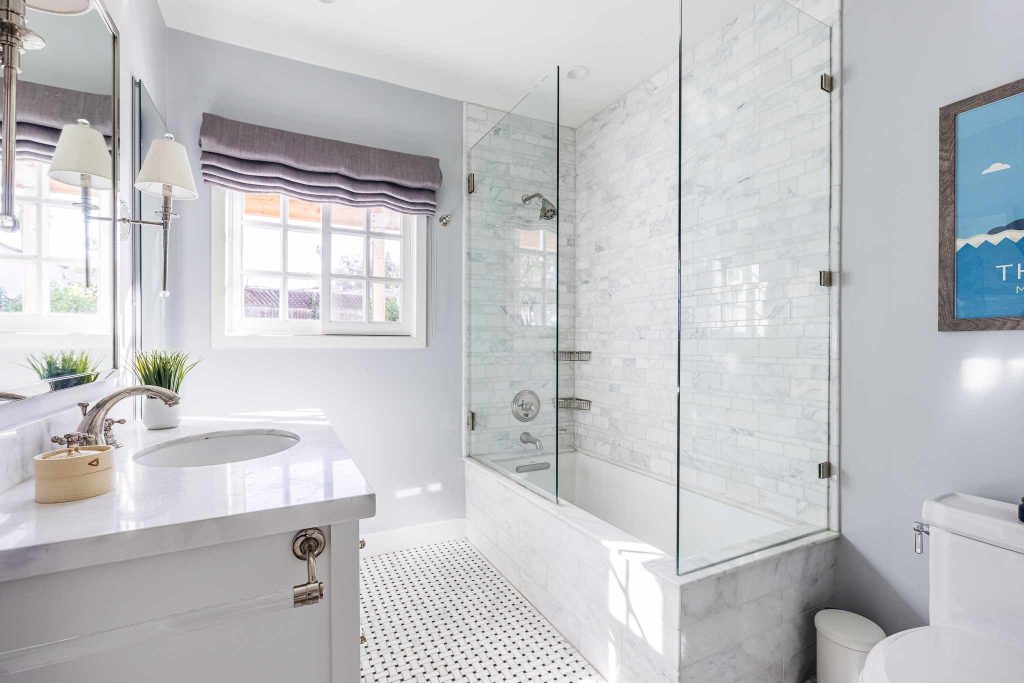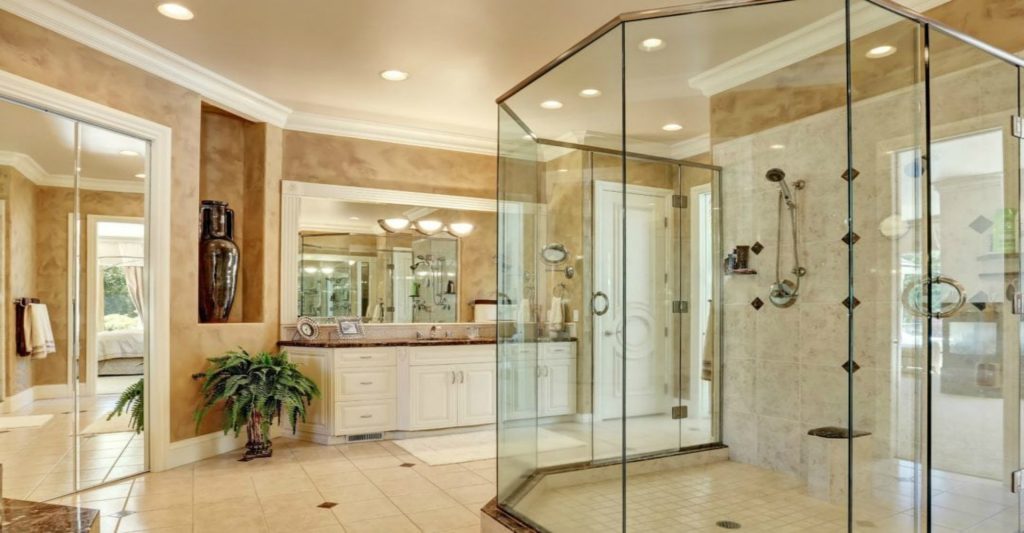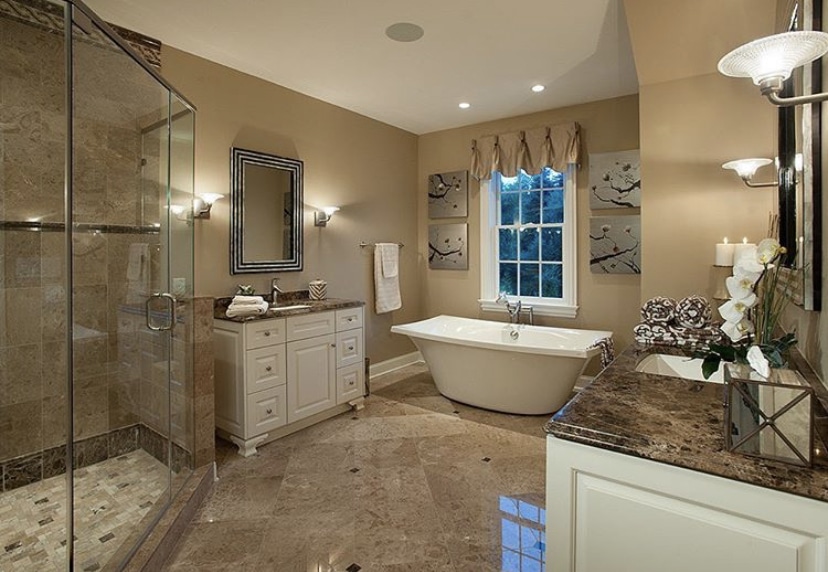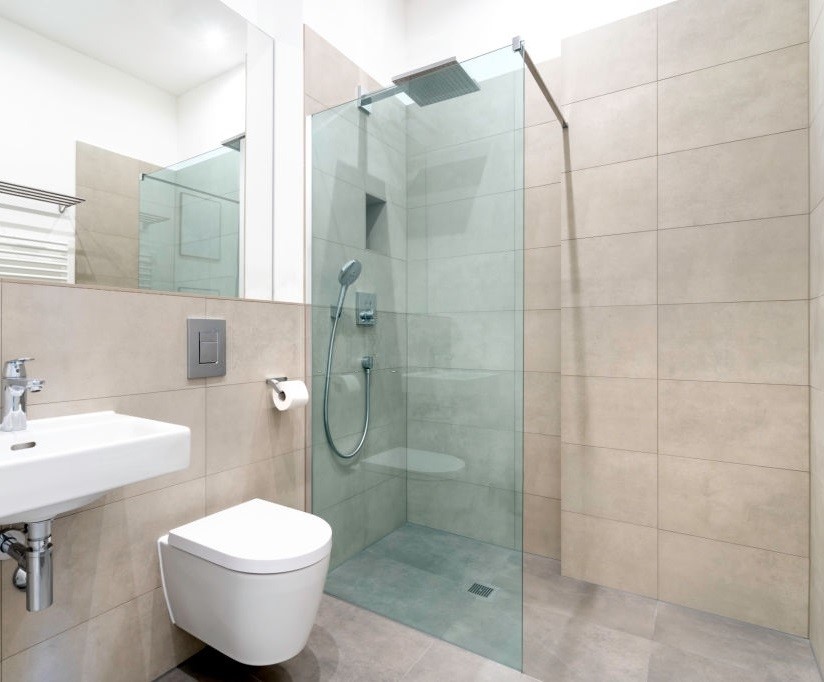At the end of the day, who does not like a long shower to take all the stress away? But we have never wondered about the basics regarding standard shower size.
Well, you’ll get to know them once you plan to put a new one or renovate an existing one. The size of the shower plays a significant role in determining the comfort and functionality of your bathing experience.
Whether you have a small bathroom with limited space or a spacious one, understanding standard shower dimensions can help you make informed decisions during the planning stage.
As we mentioned showering can lower your stress, so why don’t you tune in and learn the basics to have a perfect shower for your home?
In this article, we will provide you with a comprehensive guide to standard shower sizes to assist you in creating the perfect shower space where you can spend your time and feel good.
Similar Post: 21 Latest Walk-In Shower Tile Ideas You Must Know
Different Types of Showers

In addition to considering shower size, there are other important decisions to make, such as how many types or variety of showers there are to choose from. Well, we have got this for you. There are four main categories to choose from, although your options may be limited depending on the plumbing system in your home.
- Mixer showers: This is the most common option that connects directly to your home’s plumbing system, relying on its water pressure and heat.
- Electric showers: It is the most affordable option and can be installed in almost any home. They have a built-in element for heating water, making them energy-efficient. However, they may have lower water pressure compared to other types.
- Power showers: Also known as pumped showers, these have a built-in pump that compensates for low-pressure systems. They provide ideal heating and pressure but are less energy-efficient and often come with a higher price tag.
- Digital showers: These showers offer the latest in shower technology and are eco-friendly. They come with a digital panel for controlling pressure and heat. However, they tend to be more expensive.
Also Read: 15 Coastal Bathroom Ideas: Get Coastal Vibes in Your Bathroom
Before you know about the standard shower size, you must know the type that you can install in your house. Apart from the shower type, there are various styles to look at.
Fiberglass and acrylic are commonly used in pre-fabricated shower units due to their easy installation and maintenance, making them suitable for DIY enthusiasts.
Let’s Know the Sizes of Showers

There are various kinds of showers that you can opt for to install in your home. However, you need to look at the space in your bathroom first in order to have these showers.
We have mentioned a chart below in order to provide you with detailed information at a glance about the standard shower size. According to the International Building Code, the standard shower size must be at least 30-in. x 30-in.
This is not the appropriate size that you want to have, but you can consider this size if you are in a tight space. This is the minimum size a shower should be.
|
Type of shower |
Standard shower size |
Measurements |
|
Pre-fabricated |
Small |
32 in. wide x 32 in. deep |
|
Pre-fabricated |
Large |
36 in. wide x 60 in. deep |
|
Pre-fabricated |
ADA standards |
36 in. wide x 36 in. deep |
|
Shower-tub combo |
Small |
60 in. wide x 30 in. deep x 72 in. tall |
|
Shower-tub combo |
Large |
60 in. wide x 36 in. deep x 72 in. tall |
Small showers are typically found in compact bathrooms. These showers are designed to maximize space while still providing a comfortable showering experience. The standard shower size for small showers is approximately 32 inches (81 cm) by 32 inches (81 cm) or 36 inches (91 cm) by 36 inches (91 cm). These sizes offer enough space for an individual to shower comfortably.
At the same time, standard showers are the most common type found in residential bathrooms. They offer a balance between space utilization and comfort. The typical dimensions for a standard shower are around 36 inches (91 cm) by 48 inches (122 cm) or 36 inches (91 cm) by 60 inches (152 cm). These sizes provide enough room for an individual to move comfortably and can accommodate additional shower features such as a built-in bench or shelves.
On the other hand, walk-in showers have gained popularity in recent years due to their sleek and modern design. These showers are characterized by their open and barrier-free entry, making them accessible and easy to use for people of all ages and abilities.
However, a standard shower size range for walk-in showers is between 48 inches (122 cm) to 72 inches (183 cm) in width and 36 inches (91 cm) to 96 inches (244 cm) in length. Moreover, if you see properly, then you can notice that these sizes allow for ample space to move around comfortably.
In larger bathrooms or when designing a luxurious bathing space. We can opt for custom showers to offer the opportunity to create a unique and personalized shower experience.
Custom showers can be tailored to fit specific needs and preferences, allowing for more creativity in terms of dimensions. These standard shower sizes can range from small to expansive, depending on the available space and individual requirements.
How to Take the Measurement?

There are two possibilities. If you are building your bathroom from scratch, then you can go with the standard shower size accordingly. But, if you are limited to the existing space of your house, then you can get accurate measurements.
You can begin by taking the height measurement of the space from the base to the top of the shower unit. Then measure the width and the depth of the space.
Related: 21 Bathroom Door Ideas to Design Your Bath Space
Things to Include in Your Bathroom Along with a Shower
A bathroom is not only made up of a shower unit, you just don’t need to know about standard shower sizes to have complete knowledge about the bathroom. Well, we have got your back in that case. Below we have listed some important bath accessories to include along with a showering unit.
- Bathtub: If you have enough space and prefer to have a bathtub in your bathroom, you can choose from various options, such as freestanding tubs, built-in tubs, soaking tubs, whirlpool tubs, or clawfoot tubs. The choice will depend on your personal preferences, available space, and budget.
- Vanity & Sink: A vanity with a sink provides storage space for toiletries and offers a countertop for daily grooming activities. You can choose from different styles, sizes, and materials for the vanity, as well as various sink options such as undermount, vessel, or pedestal sinks.
- Toilet: The toilet is an essential fixture in any bathroom. There are different types to choose from, including standard toilets, wall-mounted toilets, or smart toilets with advanced features like bidet functionality or automated flushing systems.
- Storage: Consider incorporating storage solutions into your bathroom design to keep it organized and clutter-free. This can include cabinets, shelves, or built-in niches for towels, toiletries, and other bathroom essentials.
- Lighting: Adequate lighting is crucial in a bathroom for both functionality and aesthetics. A combination of ambient, task, and accent lighting can create a well-lit and inviting space. Consider wall sconces, recessed lighting, or pendant lights, depending on your style and preferences.
- Mirrors: Mirrors serve both practical and decorative purposes in a bathroom. They can help with grooming tasks and visually expand the space. Choose a mirror size and style that complements the overall design of your bathroom.
- Flooring: Selecting the right flooring material is important in a bathroom due to the high moisture and water exposure. Common options include ceramic tiles, porcelain tiles, vinyl, or natural stone like marble or travertine. Consider durability, slip resistance, and maintenance requirements when choosing the flooring material.
- Ventilation: Proper ventilation is essential to prevent mold, mildew, and moisture buildup in the bathroom. Install an exhaust fan or a window to ensure adequate airflow and reduce humidity levels.
- Accessories and Decor: You can add finishing touches to your bathroom with accessories and decor items such as towel bars, robe hooks, shower curtains, rugs, artwork, or plants. These elements can enhance the overall style and functionality of the space.
This is the list of things that you can place depending on the space of your bathroom. However, it totally depends on what you opt to place in your bathroom. Also, you can totally change the vibe of your bathroom by placing these things.
Summing It Up
To build a perfect shower, you need to have basic knowledge of standard shower sizes. We have made you aware of it in this article. This is crucial because renovating a space requires prior knowledge of these things in order to work efficiently.
By considering the right measurements and types of shower, you can have a shower area that is pleasing to your eyes and also functional.
To add more glamour and cozy vibes, you can add rugs and plants, as they will fill in the empty space and also make the space look more homely. Moreover, the space is yours, and you will have to spend quality time in it.
So it totally depends on how you want to decorate the space.
Check This Next: What is the Cost of Drywall Installation in Your House?


